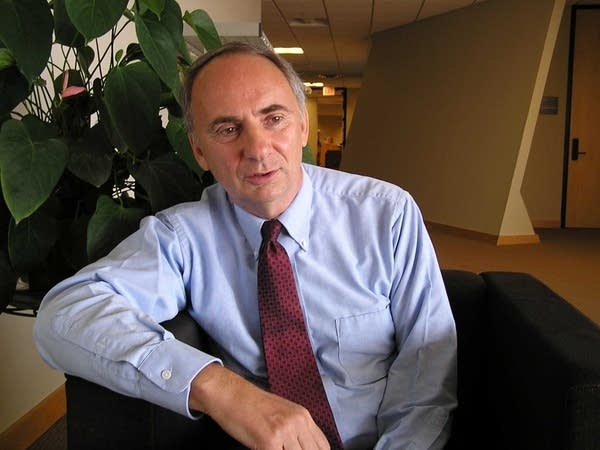Minn. economic forecast: Gloomy for a few more years

At today's press conference on the budget forecast, Minnesota state economist Tom Stinson stood calm and unblinking.
His tone was moderate, even if his words were fearsome. Stinson said the reasons for the state's budget shortfall are simple.
"We're in a recession. This recession is longer, and it's going to be deeper, than thought in November," said Stinson. "And it's probably going to be the longest and deepest recession since World War II."

Stinson says job losses and continually tight credit markets mean consumers and businesses alike are holding off on spending, crimping the economy and pinching the flow of money into state coffers.
Create a More Connected Minnesota
MPR News is your trusted resource for the news you need. With your support, MPR News brings accessible, courageous journalism and authentic conversation to everyone - free of paywalls and barriers. Your gift makes a difference.
Stinson says more job losses are in store. The economic forecasting firm Global Insight, which guides Minnesota's outlook, projects that the nation will shed another 2.8 million jobs this recession. Minnesota will also feel the hit.
"We're going to lose 120,000 jobs by 2010," Stinson said, from the peak of employment last February until the bottom of the recession.
Stinson says those losses will ripple through all sectors of Minnesota's economy, but will land especially hard in three sectors -- construction, manufacturing and business and professional services.
"This is something called the paradox of thrift. What's good for individuals is not necessarily good for the national economy."
"The only place where there's significant gains in the health care area," he said.
Stinson says the picture would look even bleaker without the economic stimulus package recently signed into law.
Nationally, the stimulus adds or saves as many as 2.5 million jobs over the next two years, and in Minnesota, the number is about 45,000 jobs.
But Stinson cautioned that the stimulus can only do so much to propel the nation out of a recession. He says a lot is actually up to you and me -- and our decisions to squirrel away money or spend it.
"The recession now is driven by the fact that consumer spending has been declining for the last two quarters. What we have to see to get out of this slump is an increase in consumer spending," said Stinson.
That's because consumer spending accounts for 70 percent of the economy. Right now, consumers are saving instead of spending, which, Stinson acknowledges, normally wouldn't sound so bad.
"This is something called the paradox of thrift. What's good for individuals is not necessarily good for the national economy," he said.
"People can't really start spending again, until they have money," said Ann Markusen, an economist at the University of Minnesota. "So they need jobs, and businesses need to be viable."
Markusen says it's unlikely that consumers can fuel a turnaround any time soon, given the hits they've been taking.

"What's happened is a huge asset implosion. So you've got to figure 50 percent drop in stocks in general, 27 percent drop in housing values nationally, plus all the foreclosures. So households across the board just have a lot less than they did before," she said.
Given those barriers, Markusen says the state's economic forecast seems too optimistic.
"It expects the Minnesota economy to turn around by early fall. I know very few national economists right now who really are that optimistic," she said. "Most are talking about sometime in 2010, or it could be even longer."
Markusen isn't alone in that view. Mike Yeager sees it the same way. He's the president of Yeager Machine in Norwood Young America. It's a company that makes parts for other manufacturers.
Yeager says he'd like to think the state's forecast is right in projecting a bump in economic activity by this fall. But he's also inclined to see that forecast as overly optimistic.
"I just don't have any facts to base it on. I'm having a hard time getting a read from my customers," Yeager said. "They don't have a good read on when their business is going to pick up yet."
Yeager says while customers seem to be asking for a lot more quotes for new work lately, they're also acting cautiously and laying off workers.
In the end, the recovery is going to take time. And even while Tom Stinson, the state economist, projects that we'll be back to normal by 2011 or 2012, and that the recession will end, he did hedge a bit.
"It may take a little longer, but it will come to an end."
But, Stinson added, it may even take another stimulus package.
